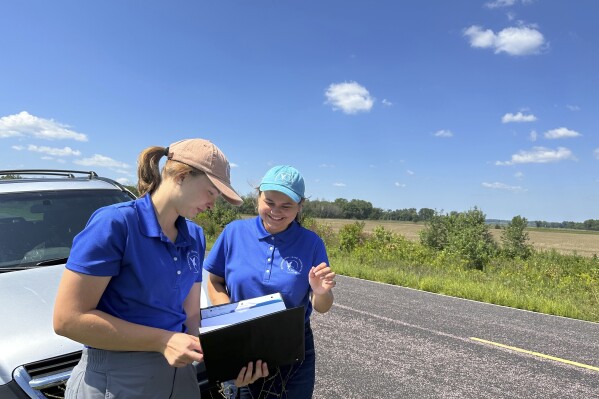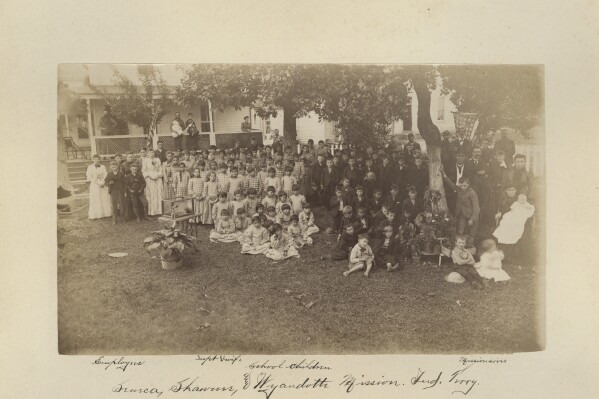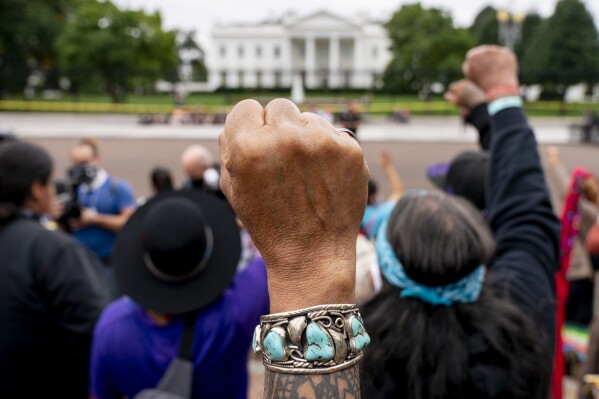Legacy of Native American boarding schools comes into view through a new interactive map
A group focused on shedding more light on the trouble legacy of boarding schools where Indigenous children were stripped of their culture and language as part of assimilation efforts released a new interactive map that includes dozens of additional schools in the U.S. and Canada.
The National Native American Boarding School Healing Coalition already had what was considered the most extensive list of boarding schools. The total now stands at 523 schools, with each dot on the map providing some brief details about the school.
The Minnesota-based group has spent years building its inventory of data, with efforts being bolstered in recent years by the U.S. Interior Department. The federal agency released its own list of more than 400 schools last year as part of an ongoing investigation meant to recognize the multigenerational trauma that resulted from boarding school policies.
The coalition’s latest research identified an additional 115 schools, with the majority being operated without federal support by church institutions that had authority to establish schools to carry out U.S. policies meant to assimilate Native children.
 Environmental groups recruit people of color into overwhelmingly white conservation world
Environmental groups recruit people of color into overwhelmingly white conservation world
 Native American group to digitize 20,000 archival pages linked to Quaker-run Indian boarding schools
Native American group to digitize 20,000 archival pages linked to Quaker-run Indian boarding schools
 ‘Native American’ or ‘Indigenous’? Journalism group rethinks name
‘Native American’ or ‘Indigenous’? Journalism group rethinks name
Samuel Torres, the coalition’s deputy chief executive, sees the map as a tool that can help relatives who are seeking answers and those who are healing.
“Every Indigenous person in this country has been impacted by the deliberate attempt to destroy Native families and cultures through boarding schools,” Torres said. “For us to visually see the scope of what was done to our communities and Nations at this scale is overwhelming, but this work is necessary to uncover the truth about this dark chapter in American history.”
The coalition already is using the latest findings to inform future research and archival digitization efforts. In November, it plans to update the map to include links to archival records.
The map was created in partnership with the National Centre for Truth and Reconciliation in Canada, which is dedicated to educating people about injustices inflicted on First Nations, Inuit and the Métis Nation by the forced removal of children from their families in that country.
“Through this digital map, we are not just capturing history,” said Jessie Boiteau, a member of the Métis Nation and a senior archivist for the center. “We have created a tool that can be used today to impact what happens in the future.”
Disclaimer: The copyright of this article belongs to the original author. Reposting this article is solely for the purpose of information dissemination and does not constitute any investment advice. If there is any infringement, please contact us immediately. We will make corrections or deletions as necessary. Thank you.





